
Holbox Island: A Paradise of Tranquil Beauty
Experience the serene beauty of Holbox Island, a car-free paradise with stunning beaches, vibrant wildlife, and unique natural experiences in Mexico's Yucatán Peninsula.
Holbox Island is a small, picturesque island located off the northern coast of Mexico's Yucatán Peninsula. This hidden gem is known for its stunning beaches, clear turquoise waters, and vibrant wildlife. The island is part of the Yum Balam Nature Reserve, which helps preserve its natural beauty and protect the diverse species that inhabit it. Holbox is a car-free paradise, with sandy streets primarily traversed by golf carts and bicycles. This contributes to its relaxed atmosphere and provides a refreshing escape from the hustle and bustle of modern life. Visitors can enjoy leisurely walks along the beach, swim in the warm waters, or simply relax in a hammock while enjoying the gentle sea breeze. The island is also a haven for birdwatchers and nature enthusiasts. The nearby mangroves and lagoons are home to flamingos, pelicans, and a variety of other bird species. For those interested in marine life, Holbox offers unique experiences such as swimming with whale sharks and spotting bioluminescent plankton during night tours. The island's charm is further enhanced by its colorful murals and friendly local community, making it a must-visit destination for anyone seeking a tranquil and enchanting getaway.
Local tips in Holbox Island
- Visit between June and September to swim with whale sharks.
- Carry cash, as many places do not accept credit cards.
- Wear eco-friendly sunscreen to protect the marine life.
- Rent a golf cart or bicycle to explore the island.
- Stay in eco-friendly accommodations to support local conservation efforts.
Holbox Island: A Paradise of Tranquil Beauty
Holbox Island is a small, picturesque island located off the northern coast of Mexico's Yucatán Peninsula. This hidden gem is known for its stunning beaches, clear turquoise waters, and vibrant wildlife. The island is part of the Yum Balam Nature Reserve, which helps preserve its natural beauty and protect the diverse species that inhabit it. Holbox is a car-free paradise, with sandy streets primarily traversed by golf carts and bicycles. This contributes to its relaxed atmosphere and provides a refreshing escape from the hustle and bustle of modern life. Visitors can enjoy leisurely walks along the beach, swim in the warm waters, or simply relax in a hammock while enjoying the gentle sea breeze. The island is also a haven for birdwatchers and nature enthusiasts. The nearby mangroves and lagoons are home to flamingos, pelicans, and a variety of other bird species. For those interested in marine life, Holbox offers unique experiences such as swimming with whale sharks and spotting bioluminescent plankton during night tours. The island's charm is further enhanced by its colorful murals and friendly local community, making it a must-visit destination for anyone seeking a tranquil and enchanting getaway.
When is the best time to go to Holbox Island?
Iconic landmarks you can’t miss
Isla de la Pasión
Explore Isla de la Pasión, a serene nature preserve in Mexico, where stunning landscapes and diverse wildlife await every nature lover.
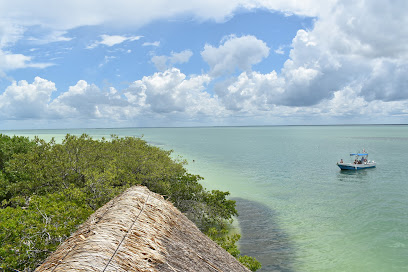
Isla Holbox
Discover the enchanting Isla Holbox, a tranquil island paradise in Quintana Roo, Mexico, known for its stunning beaches and vibrant wildlife.
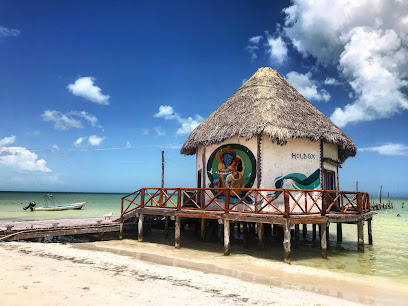
Mr. Happy
Experience the vibrant flavors of Holbox at Mr. Happy, your go-to breakfast and brunch spot for delicious, fresh cuisine.
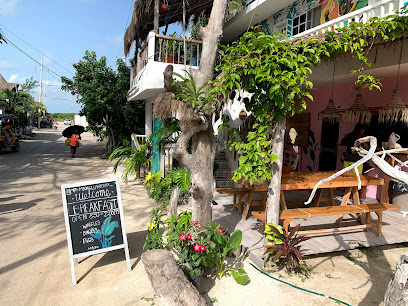
Letras Holbox
Experience the vibrant charm of Letras Holbox, a must-visit tourist attraction in Quintana Roo, where stunning views and local culture await.
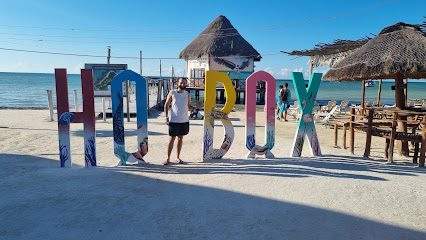
Abarrotes Dunosusa
Discover local flavors and essentials at Abarrotes Dunosusa, Holbox's charming supermarket offering a wide variety of products for every traveler.
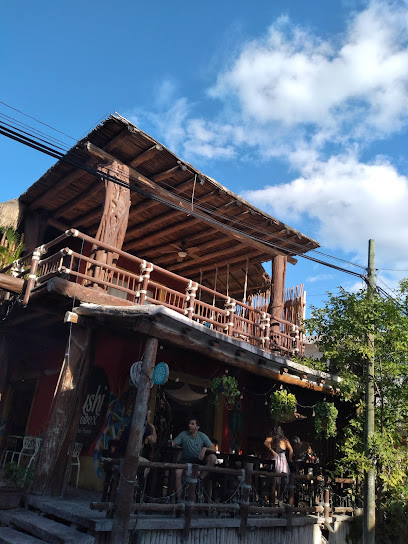
Unmissable attractions to see
Isla de la Pasión
Explore the pristine beauty of Isla de la Pasión, a nature preserve in Mexico teeming with wildlife, stunning landscapes, and serene beaches.
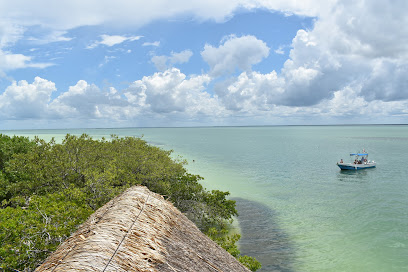
Isla de los Pajaros
Explore the breathtaking Isla de los Pajaros, a wildlife refuge in Holbox, Quintana Roo, known for its diverse birdlife and stunning natural beauty.
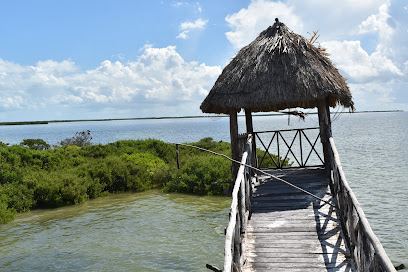
Bioluminiscencia
Immerse yourself in the magical glow of Bioluminiscencia in Holbox, where nature's luminescent wonders await your discovery.
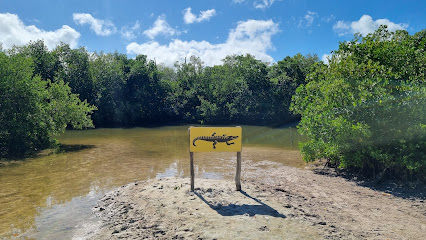
ISLA Holbox Beach Zona Hotelera
Discover the serene beauty and vibrant marine life of Isla Holbox Beach, a hidden gem in Quintana Roo, Mexico, ideal for relaxation and adventure.
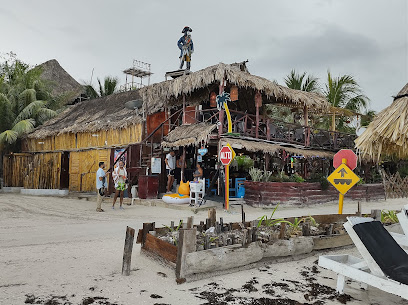
Casa Blanca
Experience the serene beauty and vibrant culture of Casa Blanca, a must-visit tourist attraction in Holbox, Quintana Roo.
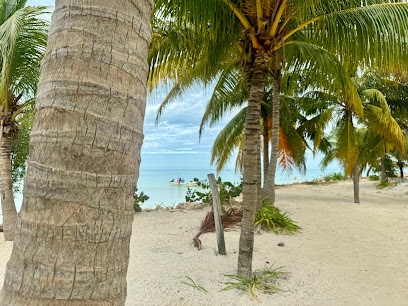
Playa Holbox
Experience the tranquil beauty of Playa Holbox, a hidden paradise in Quintana Roo, Mexico, where the ocean meets nature in perfect harmony.
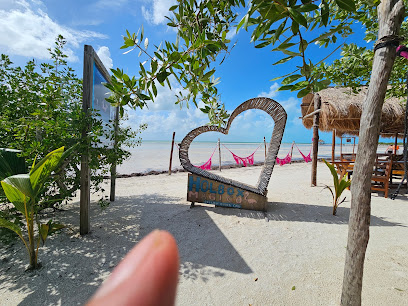
Punta Ciricote
Explore the breathtaking trails of Punta Ciricote on Holbox Island, a serene hiking area surrounded by stunning landscapes and vibrant wildlife.
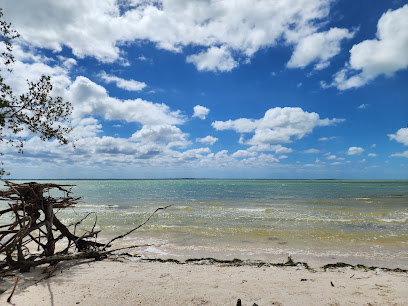
La Cabañita sunset
Experience breathtaking sunsets at La Cabañita Sunset in Holbox, a tranquil haven perfect for relaxation and unforgettable memories.
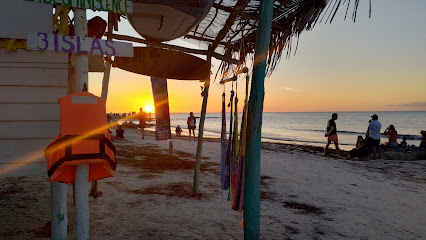
Playa NELSY
Discover the pristine beauty of Playa NELSY in Holbox, Quintana Roo, a hidden beach paradise perfect for relaxation and breathtaking sunsets.
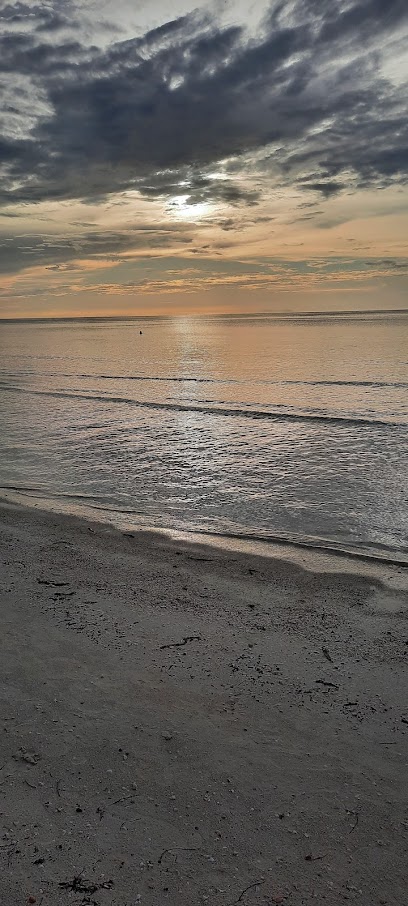
UMA Cayo Cocodrilo
Explore the natural wonder of UMA Cayo Cocodrilo, an ecological park in Holbox, where adventure meets tranquility in a stunning tropical setting.

Rio Kuka
Explore the serene beauty and diverse wildlife of Rio Kuka, a national reserve in Holbox that embodies Mexico's natural wonders.

Lettere Holbox
Experience the serene beauty of Lettere Holbox, a tranquil park on Holbox Island, where nature and relaxation meet in perfect harmony.
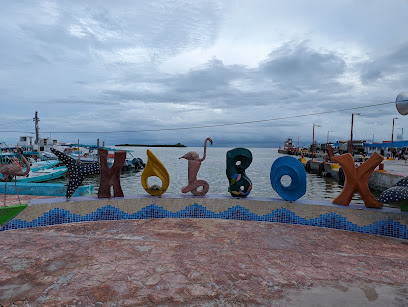
Holbox
Explore the serene island of Holbox, a hidden paradise in Quintana Roo known for its pristine beaches and vibrant wildlife, perfect for a tranquil getaway.
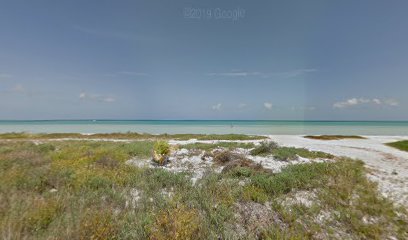
Chobi Beach
Discover the serene beauty of Chobi Beach in Holbox, Mexico - a perfect blend of relaxation, adventure, and stunning natural landscapes.
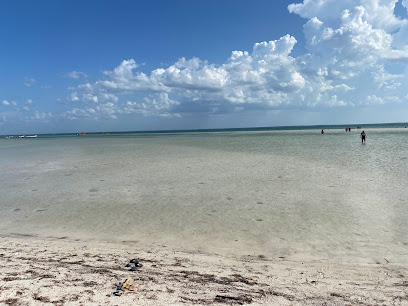
La Mejor puesta del Sol en Holbox
Enjoy stunning sunsets and tranquil vibes at La Mejor puesta del Sol in Holbox, the perfect spot to unwind and soak in nature's beauty.
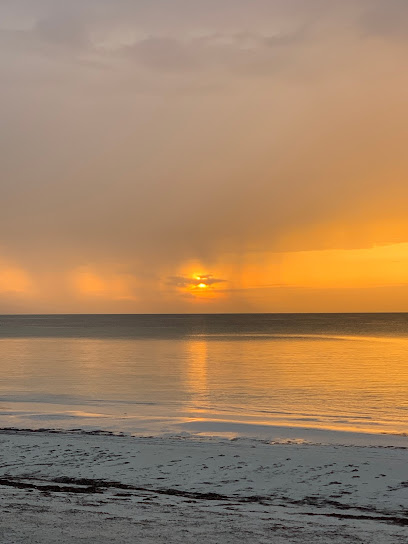
Essential places to dine
Roots Pizzas a la leña Isla Holbox
Experience mouthwatering wood-fired pizzas amidst the stunning backdrop of Isla Holbox's vibrant culture and natural beauty.
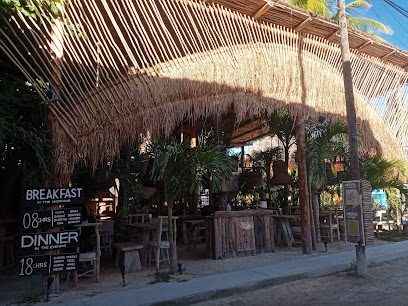
Restaurante Bar and Grill Viva Zapata Isla Holbox
Experience authentic Mexican flavors at Restaurante Bar and Grill Viva Zapata in Isla Holbox, where every meal is a celebration of culinary delights.
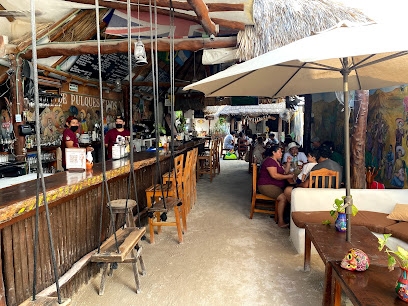
Las Panchas
Discover Las Panchas: A Seafood Haven in Holbox Offering Authentic Mexican Cuisine Amidst Tropical Paradise.
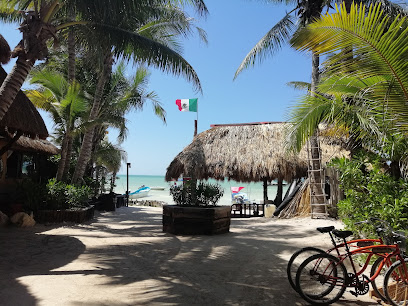
Mr. Happy
Experience vibrant breakfasts at Mr. Happy in Holbox—where every bite celebrates local flavors and fresh ingredients.
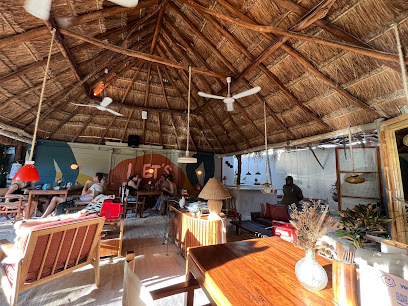
Taco Queto
Discover authentic Mexican cuisine at Taco Queto in Holbox – where fresh ingredients meet delicious flavors in a vibrant setting.
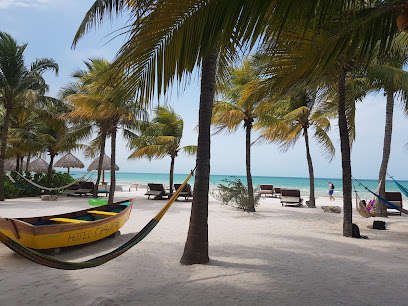
LUUMA
Discover exquisite flavors at LUUMA in Holbox – where culinary artistry meets local charm for an unforgettable dining experience.
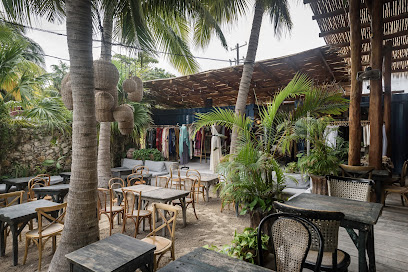
Ceviches La Chingada
Discover the vibrant flavors of Mexico at Ceviches La Chingada in Holbox - your go-to spot for fresh seafood and authentic ceviche.
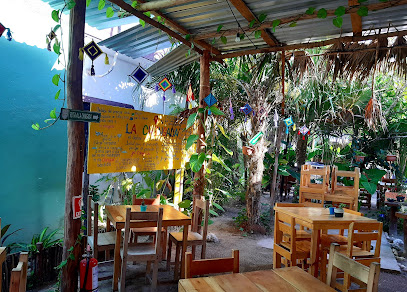
Casa Nostra Roof Restaurant
Experience authentic Italian cuisine with breathtaking views at Casa Nostra Roof Restaurant in Holbox - where every meal is a celebration.
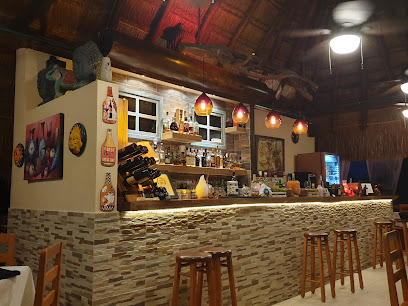
Cenaduria La Tapatia - Holbox
Experience vibrant flavors and authentic Mexican cuisine at Cenaduria La Tapatia in beautiful Holbox.
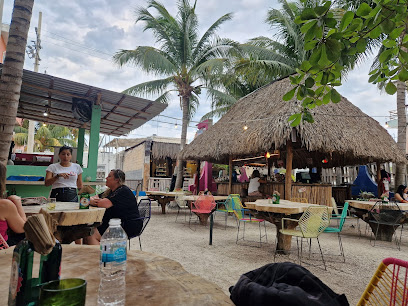
Oliver's steakhouse
Experience the best steaks in Isla de Holbox at Oliver's Steakhouse – where flavor meets island charm in every bite.
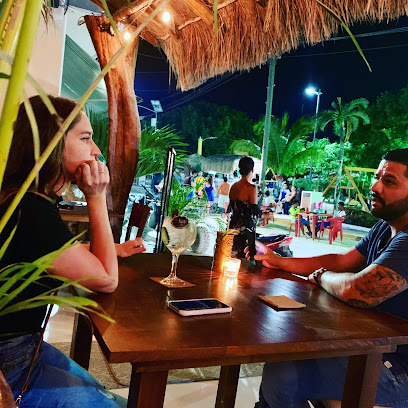
Quartieri Holbox
Experience authentic Neapolitan pizza at Quartieri Holbox – where Italian flavors meet Caribbean charm.
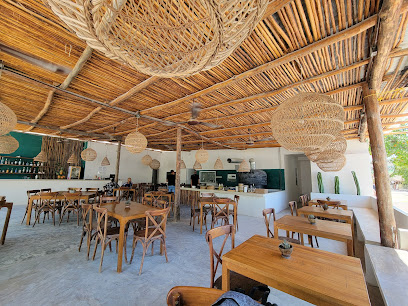
Escape Holbox
Experience a fusion of Italian and Mexican flavors at Escape Holbox—your gateway to culinary bliss on Isla Holbox.
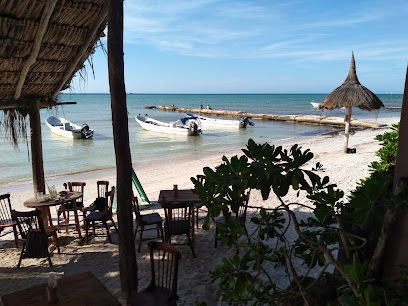
A by Amaite
Discover exquisite dining at A by Amaite in Holbox - where local flavors meet breathtaking views for an unforgettable culinary journey.

Barba hbx
Discover the vibrant flavors of Mexico at Barba hbx, a top culinary destination on Isla Holbox known for its fresh seafood and warm hospitality.
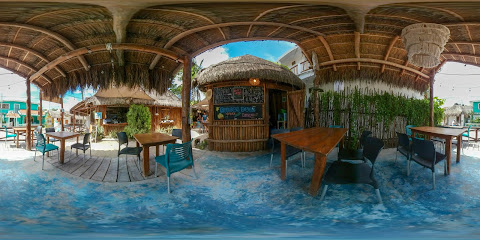
Restaurante Wayak Dreamy Food Holbox
Experience the best of Mexican brunch at Restaurante Wayak Dreamy Food Holbox, where delightful flavors meet stunning views.
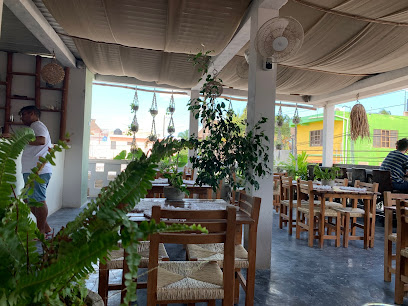
Markets, malls and hidden boutiques
Sandmade Swimwear Holbox
Explore stylish swimwear and beach accessories at Sandmade Swimwear Holbox, your boutique destination for island fashion.
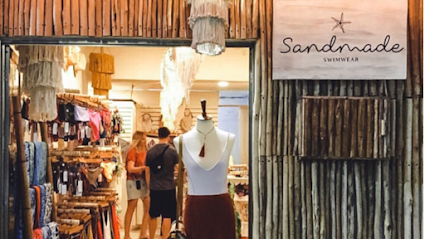
Papa Rana
Explore Papa Rana in Holbox for unique souvenirs and gifts that embody the vibrant spirit of this tropical paradise.
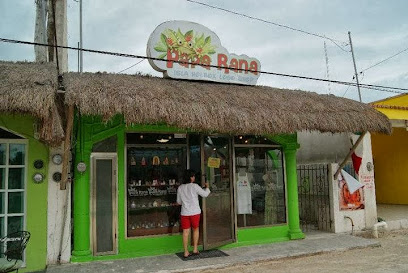
XAMAN Concept Store
Experience the vibrant culture of Holbox at XAMAN Concept Store, a boutique offering unique handcrafted treasures and authentic local artistry.
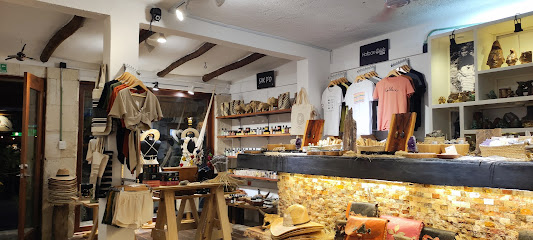
Le Bazaar Boutique
Explore Le Bazaar Boutique in Holbox for exquisite native American goods and unique treasures that embody the spirit of Mexico's vibrant culture.
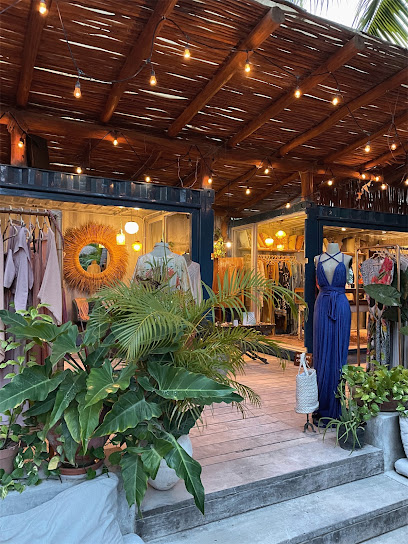
Diosa maya
Discover unique local handicrafts and vibrant art at Diosa Maya, the boutique gem of Holbox, Quintana Roo.

Lolita Holbox Boutique
Explore vibrant beachwear at Lolita Holbox Boutique, your go-to shop for stylish clothing and accessories in Holbox, Quintana Roo.
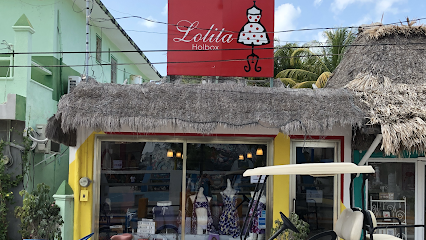
Apollo Design Store
Explore the vibrant creativity of Holbox at Apollo Design Store, featuring unique handmade treasures that embody local artistry.
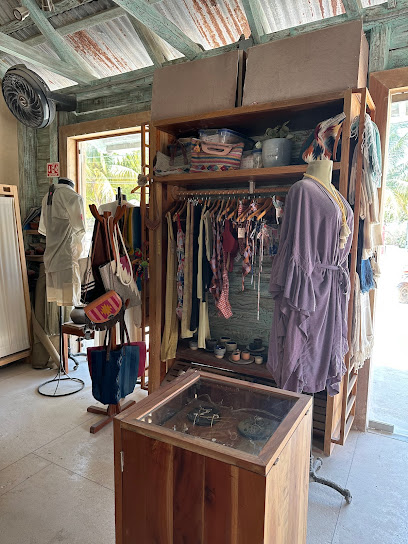
WÁAY
Discover WÁAY, a boutique in Holbox offering handcrafted beach clothing, artisan chocolates, and unique jewelry reflecting local artistry.
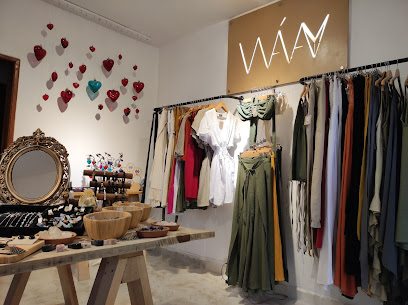
Lalo.com
Discover unique souvenirs and local treasures at Lalo.com, Isla Holbox's premier gift shop full of charm and character.
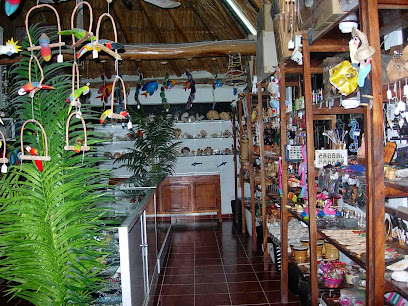
Valentin Store Boutique
Explore the vibrant artistry at Valentin Store Boutique in Holbox, where unique local crafts and charming finds await every traveler.
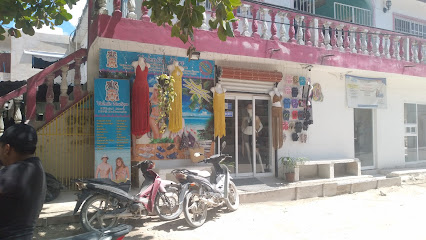
Omen
Explore Omen, Holbox's charming gift shop offering unique souvenirs and local crafts that capture the island's vibrant spirit.
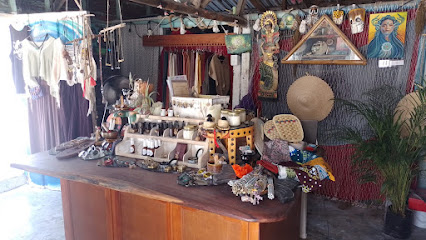
Boutique
Explore Holbox's vibrant fashion scene at this charming boutique, where local artistry meets stylish clothing for the perfect island look.
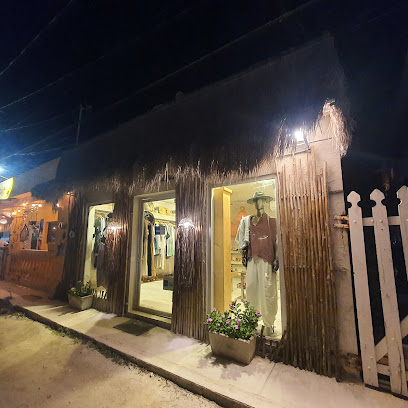
La Changa
Discover the charm of La Changa, a unique store in Holbox offering local crafts and vibrant cultural treasures that capture the spirit of Quintana Roo.
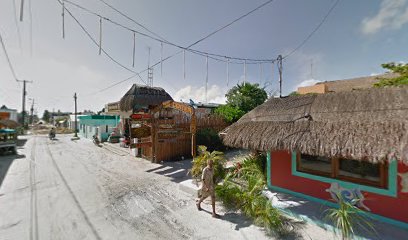
Fenicia Collective Market
Explore Fenicia Collective Market in Holbox for unique handmade clothing, stunning jewelry, and local art that captures the essence of Quintana Roo's vibrant culture.
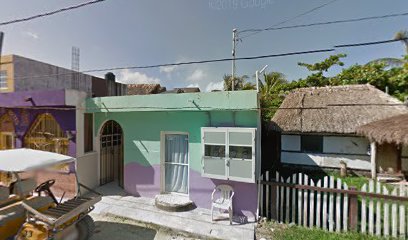
UntoXic
Discover unique island-inspired fashion at UntoXic, a charming clothing store in the heart of Holbox, Quintana Roo.
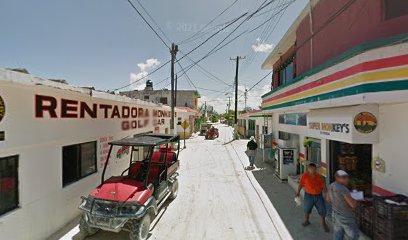
Essential bars & hidden hideouts
The Hot Corner
Discover the vibrant flavors of Holbox at The Hot Corner, a popular gastropub offering fresh seafood and a lively atmosphere.
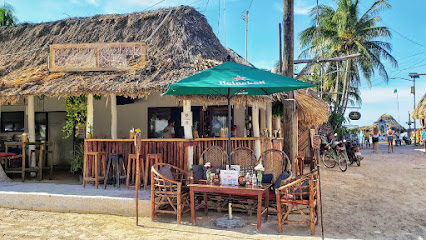
Barba Negra
Discover Barba Negra in Holbox for a vibrant atmosphere, delicious Mexican cuisine, and refreshing cocktails in a tropical paradise.
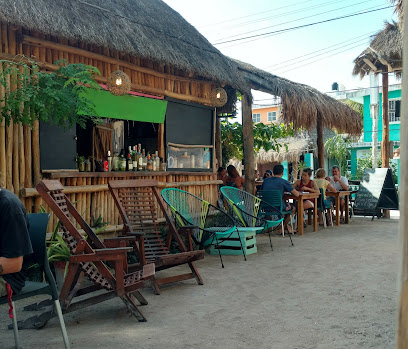
Soulbox
Discover the vibrant atmosphere of Soulbox, Holbox's premier bar offering exquisite cocktails and unforgettable nights in a tropical paradise.
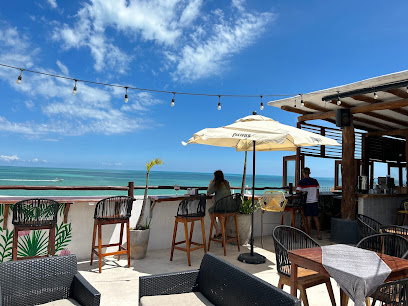
ALMA Bar
Experience the vibrant atmosphere and refreshing flavors at ALMA Bar in Holbox, a perfect blend of relaxation and culinary delight.
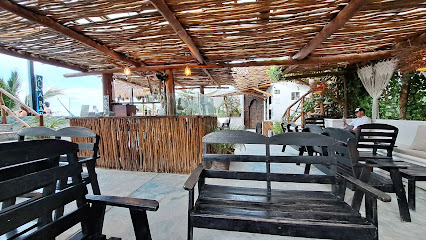
Fresco - Bar & Grill
Experience the best of Holbox at Fresco - Bar & Grill, where fresh flavors meet a lively atmosphere for an unforgettable dining experience.
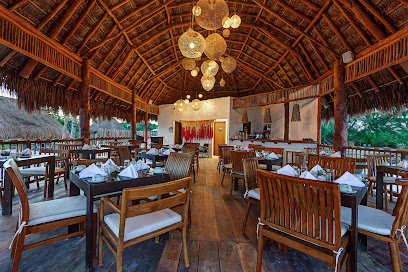
TRIBU BAR
Dive into the vibrant nightlife of Holbox at TRIBU BAR, where refreshing cocktails and live music create unforgettable experiences.
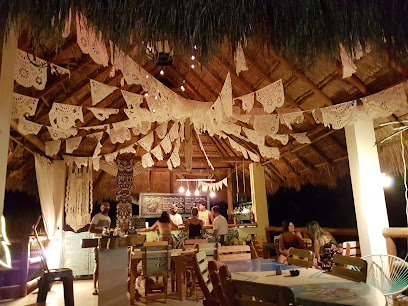
Beach Bar Carioca's
Experience the vibrant atmosphere and stunning views at Beach Bar Carioca's in Holbox, your perfect beach escape.
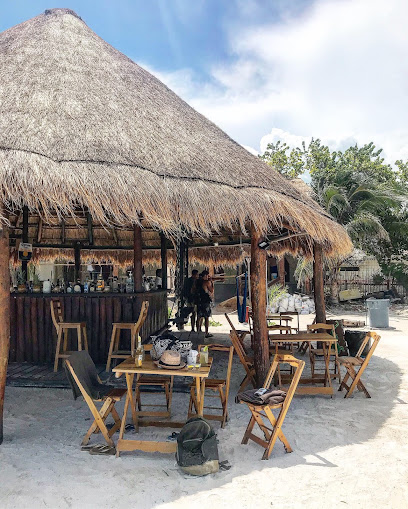
Holbox Magico
Experience the vibrant atmosphere and refreshing cocktails at Holbox Magico, the perfect bar for relaxation and socializing in beautiful Holbox, Mexico.
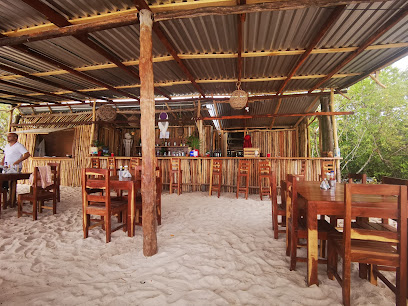
Tequila O'clock
Experience the vibrant atmosphere and extensive tequila selection at Tequila O'clock, Holbox's iconic bar for tourists and locals alike.
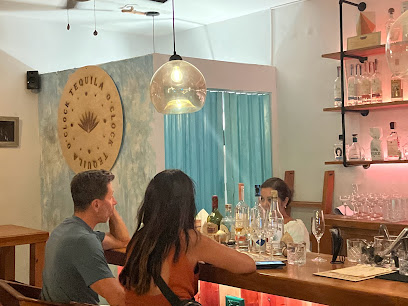
Bikini Bottom Holbox
Experience the vibrant nightlife at Bikini Bottom Holbox, a lively bar offering refreshing drinks and a lively atmosphere on Isla Holbox.
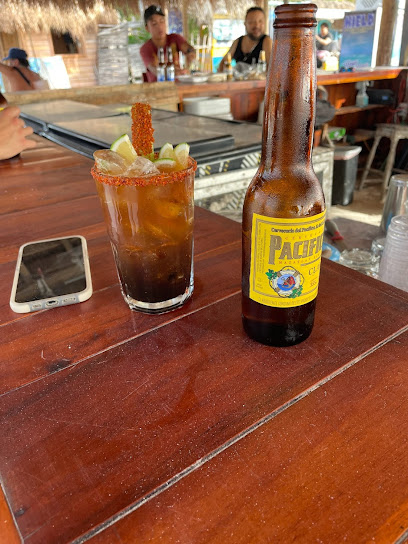
Punta Coco Restaurant Bar
Experience the best of Holbox at Punta Coco Restaurant Bar, where delicious cocktails and local cuisine meet stunning beach views.
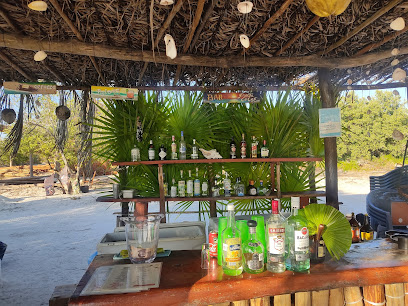
La Puerta Azul Beach Bar
Experience the laid-back charm of La Puerta Azul Beach Bar on Holbox Island, where refreshing cocktails and stunning ocean views await.
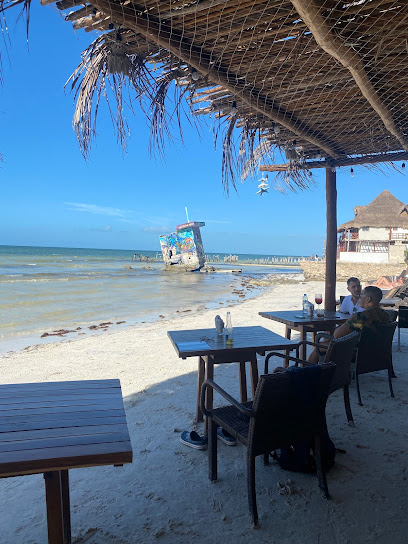
Bar Arena
Experience the vibrant nightlife at Bar Arena in Holbox, a perfect blend of tropical flair and lively entertainment.
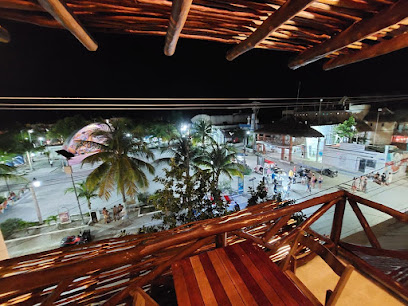
Kraken Chiringuito Mexicano
Discover the vibrant atmosphere of Kraken Chiringuito Mexicano in Holbox, where refreshing cocktails and local flavors create unforgettable experiences.
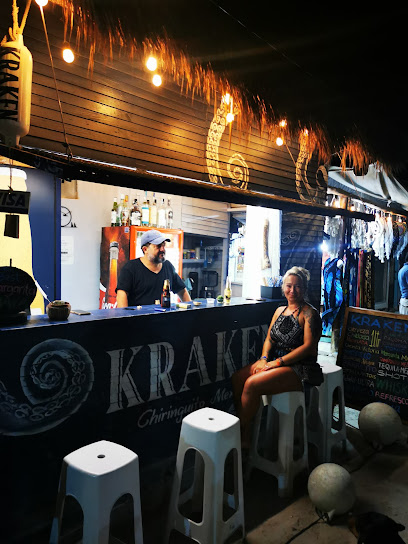
INTER NECHOS BAR *men's club*
Explore the vibrant nightlife at INTER NECHOS BAR in Holbox, where refreshing drinks and a lively atmosphere await in paradise.
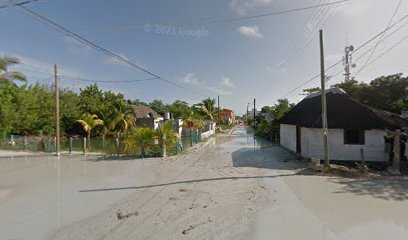
Local Phrases about Holbox Island
-
- HelloHola
[oh-lah] - GoodbyeAdiós
[ah-dee-ohs] - YesSí
[see] - NoNo
[noh] - Please/You're welcomePor favor/De nada
[por fah-vor/de nah-dah] - Thank youGracias
[grah-see-ahs] - Excuse me/SorryPerdón/Lo siento
[pair-dohn/loh see-en-toh] - How are you?¿Cómo estás?
[koh-moh ehs-tahs] - Fine. And you?Bien. ¿Y tú?
[bee-ehn. ee too] - Do you speak English?¿Hablas inglés?
[ah-blahs een-glays] - I don't understandNo entiendo
[noh ehn-tee-ehn-doh]
- HelloHola
-
- I'd like to see the menu, pleaseMe gustaría ver el menú, por favor
[meh goo-stah-ree-ah behr ehl meh-noo, por fah-vor] - I don't eat meatNo como carne
[noh koh-moh kahr-neh] - Cheers!¡Salud!
[sah-loohd] - I would like to pay, pleaseMe gustaría pagar, por favor
[meh goo-stah-ree-ah pah-gahr, por fah-vor]
- I'd like to see the menu, pleaseMe gustaría ver el menú, por favor
-
- Help!¡Ayuda!
[ah-yoo-dah] - Go away!¡Vete!
[veh-teh] - Call the Police!¡Llama a la policía!
[yah-mah ah lah poh-lee-see-ah] - Call a doctor!¡Llama a un doctor!
[yah-mah ah oon dohk-tohr] - I'm lostEstoy perdido
[ehs-toy pair-dee-doh] - I'm illEstoy enfermo
[ehs-toy ehn-fehr-moh]
- Help!¡Ayuda!
-
- I'd like to buy...Me gustaría comprar...
[meh goo-stah-ree-ah kohm-prahr] - I'm just lookingSólo estoy mirando
[soh-loh ehs-toy mee-rahn-doh] - How much is it?¿Cuánto cuesta?
[kwan-toh kwehs-tah] - That's too expensiveEs demasiado caro
[ehs deh-mah-see-ah-doh kah-roh] - Can you lower the price?¿Puedes bajar el precio?
[pweh-dehs bah-har ehl pree-syoh]
- I'd like to buy...Me gustaría comprar...
-
- What time is it?¿Qué hora es?
[keh oh-rah ehs] - It's one o'clockEs la una
[ehs lah oo-nah] - Half past (10)Media hora (10)
[meh-dee-ah oh-rah (deez)] - MorningMañana
[mah-nyah-nah] - AfternoonTarde
[tahr-deh] - EveningNoche
[noh-cheh] - YesterdayAyer
[ah-yehr] - TodayHoy
[oy] - TomorrowMañana
[mah-nyah-nah] - 1Uno
[oo-noh] - 2Dos
[dohs] - 3Tres
[trehs] - 4Cuatro
[kwah-troh] - 5Cinco
[seen-koh] - 6Seis
[says] - 7Siete
[syeh-teh] - 8Ocho
[oh-choh] - 9Nueve
[nweh-veh] - 10Diez
[dyehs]
- What time is it?¿Qué hora es?
-
- Where's a/the...?¿Dónde está el/la...?
[dohn-deh ehs-tah ehl/lah] - What's the address?¿Cuál es la dirección?
[kwal ehs lah dee-rehk-syon] - Can you show me (on the map)?¿Puedes mostrarme (en el mapa)?
[pweh-dehs mohs-trar-meh (ehn ehl mah-pah)] - When's the next (bus)?¿Cuándo es el próximo (autobús)?
[kwan-doh ehs ehl prohk-see-moh (ow-toh-boos)] - A ticket (to ....)Un boleto (a ...)
[oon boh-leh-toh (ah ...)]
- Where's a/the...?¿Dónde está el/la...?
History of Holbox Island
-
Holbox Island, known as 'Black Hole' in Yucatec Maya, has been inhabited since ancient times. The island was a strategic point for the Mayans, used for fishing and as a trading post. Artifacts and remnants of this period can still be found, revealing the deep connection the island had with Mayan civilization.
-
During the 16th century, Spanish conquistadors arrived in the Yucatán Peninsula, impacting Holbox Island. While the island wasn't a central focus, it was affected by the broader changes in the region, including the introduction of new cultures, languages, and governance structures. The Spanish influence is still evident in some of the island's architecture and traditions.
-
In the 17th and 18th centuries, the waters around Holbox Island were frequented by pirates. The island's strategic location made it a perfect hideaway for buccaneers who targeted the rich Spanish galleons. Local legends and folklore often tell tales of buried treasure and pirate escapades, adding an air of mystery to the island's history.
-
By the early 19th century, Holbox Island began to develop as a small fishing village. The island's inhabitants relied heavily on the rich marine life surrounding it, particularly for lobster and other seafood. This period marked the beginning of Holbox's reputation as a tranquil and idyllic fishing community.
-
In the latter half of the 20th century, Holbox Island began to attract the attention of tourists seeking a serene and natural escape. The island's unique blend of untouched landscapes, rich biodiversity, and traditional culture has led to a gradual increase in tourism. Today, Holbox is a popular destination for eco-tourism, offering activities like whale shark spotting, bird watching, and exploring its pristine beaches.
-
Holbox Island is home to several cultural festivals that reflect its rich heritage. The most notable is the annual Whale Shark Festival, which celebrates the migration of these gentle giants to the island's waters. Additionally, local festivals often include traditional music, dance, and culinary delights, allowing visitors to engage deeply with the island's culture.
Holbox Island Essentials
-
Holbox Island is located off the north coast of the Yucatán Peninsula in Mexico. The nearest airport is Cancún International Airport (CUN). From Cancún, you can take a bus or a private transfer to the town of Chiquilá, which is approximately a 2-hour drive. From Chiquilá, ferries to Holbox Island operate frequently throughout the day, with the crossing taking about 20-30 minutes.
-
Transportation on Holbox Island primarily consists of golf carts, bicycles, and walking, as cars are not allowed on the island. Golf carts can be rented from various rental shops around the island, and bicycles are also available for hire. Taxis on the island are essentially golf carts, and they can be flagged down or booked in advance.
-
The official currency in Mexico is the Mexican Peso (MXN). While credit cards are accepted in many hotels, restaurants, and larger shops, it is advisable to carry cash, especially for smaller establishments and local markets. ATMs are available on the island, but it's wise to withdraw sufficient cash before arriving to avoid any inconvenience.
-
Holbox Island is generally a safe destination for tourists. However, as with any travel destination, it is important to take standard precautions. Avoid isolated areas at night and keep an eye on your belongings in crowded places. While Holbox does not have specific high-crime areas targeting tourists, remaining vigilant and aware of your surroundings is always recommended.
-
In case of emergency, dial 911 for immediate assistance. Holbox Island has a small medical clinic that can handle minor health issues. For more serious medical emergencies, you may need to be transported to the mainland. It is highly recommended to have travel insurance that covers medical emergencies. There are also pharmacies on the island where you can purchase over-the-counter medications.
-
Fashion: Do wear light, breathable clothing suitable for a tropical climate, but avoid overly revealing swimwear away from the beach. Religion: Do respect local customs and traditions, although Holbox is not particularly conservative. Public Transport: Do respect the rules and guidelines when using golf cart taxis. Greetings: Do greet people with a friendly 'Hola' or 'Buenos días'. Eating & Drinking: Do try local specialties such as ceviche and fresh seafood. Don’t refuse food offerings, as it may be considered impolite.
-
To experience Holbox Island like a local, visit the local markets where you can buy fresh produce and handmade crafts. Engage with locals, as they are often friendly and willing to share stories about the island's history and culture. Don't miss the chance to see the bioluminescent plankton at night, especially during the summer months. Also, consider visiting during the whale shark season (June to September) for an unforgettable experience.
Nearby Cities to Holbox Island
-
Things To Do in Playa del Carmen
-
Things To Do in Cozumel
-
Things To Do in Tulum
-
Things To Do in Corozal Town
-
Things To Do in Campeche
-
Things To Do in Orange Walk Town
-
Things To Do in San Pedro
-
Things To Do in Caye Caulker
-
Things To Do in Belize City
-
Things To Do in Dangriga
-
Things To Do in San Ignacio
-
Things To Do in Hopkins
-
Things To Do in Tikal
-
Things To Do in Placencia
-
Things To Do in Flores











